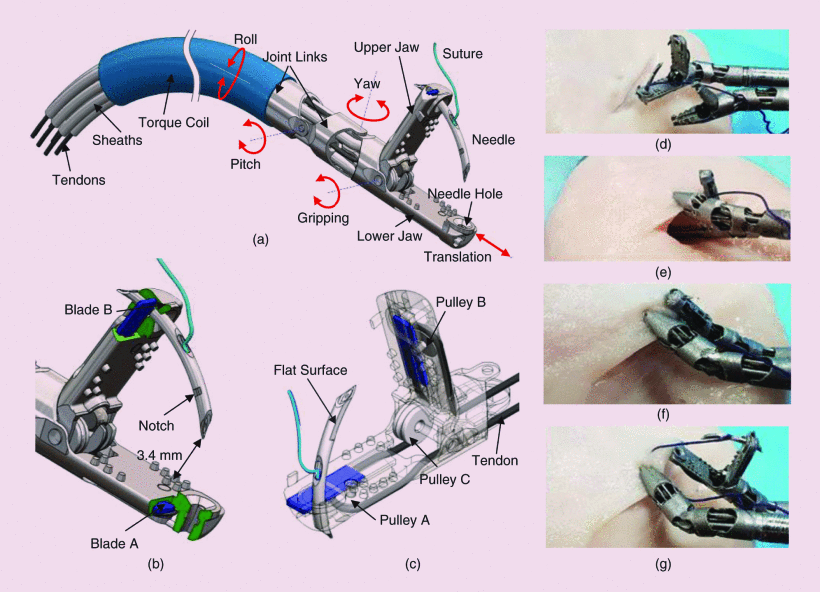Sewing up the Wounds: A Robotic Suturing System for Flexible Endoscopy

Perforations in the digestive tract are life-threatening, and that is why endoscopic physicians are very cautious when trying to remove cancerous tumors in the stomach or colon: they are afraid of cutting through the organs (i.e., perforations) and they do not have good tools to close the perforation. We developed a flexible endoscopic surgical robot to securely close the perforation by suturing - the gold standard of perforation closure. The tiny, dexterous robotic arms are inserted into the digestive tract via natural orifices (e.g., mouth or anus) and they are teleoperated by the clinician to repair the perforation. In this way, the clinician is able to close the perforation without opening up the patient’s body, a big advance compared to open surgery and laparoscopic surgery. Being able to suture perforations, the clinician can then cut deeper (more cleanly) when removing cancerous tumors that are deeply seeded in the digestive tract wall; he/she can even purposely make a hole on the stomach or colon to reach other organs outside for surgery on these organs; once done, the purposely created hole can then be sutured. This would promote a paradigm shift of current minimally invasive surgery from laparoscopic surgery to Natural Orifice Transluminal Endoscopic Surgery (NOTES) which promises scarless and faster recovery.
Related Pubulication:
Paper: Cao, Lin, et al. “Sewing up the wounds: A robotic suturing system for flexible endoscopy.” IEEE Robotics & Automation Magazine 27.3 (2020): 45-54.
(c) Pheelab. All rights reserved.
